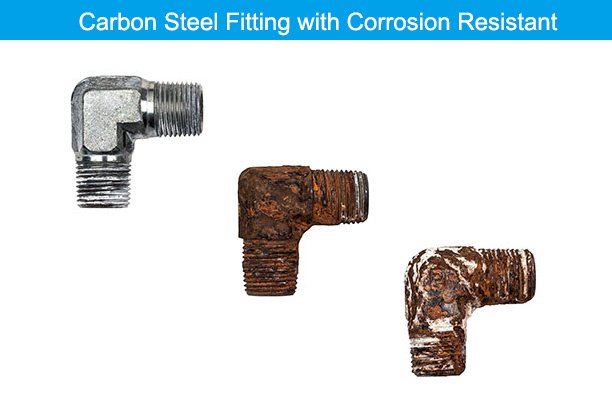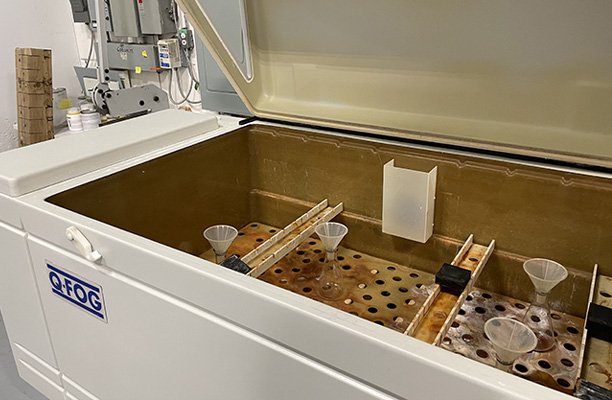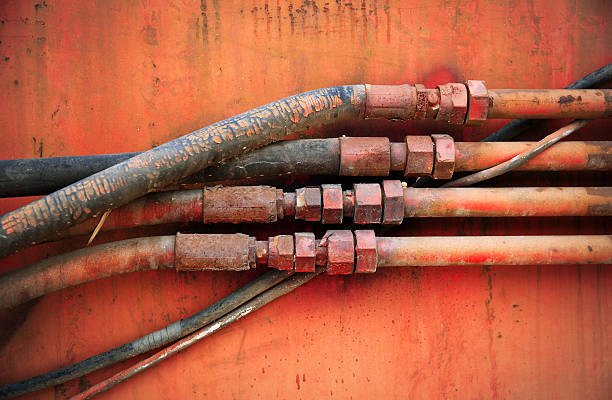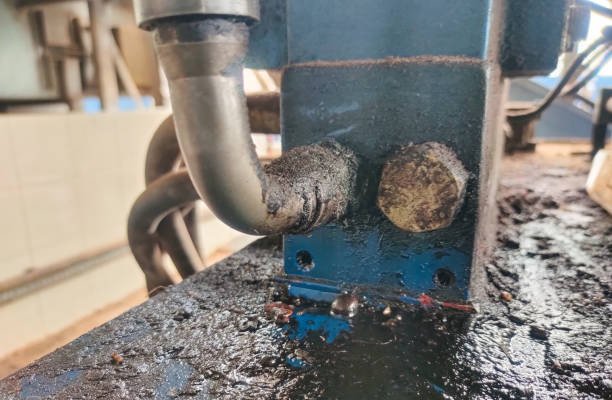Salt spray testing, or salt fog testing, is the gold standard for evaluating the corrosion resistance of materials and surface coatings. It simulates harsh environmental conditions in a controlled laboratory setting to measure how products stand up to the test of time—long before they’re deployed in real-world conditions.
For industries such as automotive, marine, and construction, where durability and corrosion resistance are non-negotiable, salt spray testing serves as a critical step in quality control and material selection. Whether you’re a manufacturer, an engineer, or just someone curious about how products are tested for longevity, this article will give you the full picture.
From the science behind the process to its applications, benefits, limitations, and real-world use cases, this blog dives into everything you need to know about salt spray testing.
What Is Salt Spray Testing?
Salt spray testing is a corrosion testing method used to simulate and accelerate the natural processes of material degradation in harsh environments. Its main objective is to determine how long a material, coating, or product can resist corrosion when exposed to conditions mimicking salt-laden environments, such as coastal areas, industrial regions, or marine applications.
Unlike natural exposure testing, which takes months or years, salt spray testing delivers results within days or weeks by increasing the concentration and exposure to corrosive elements.
Let’s break it down further:
Key Elements of Salt Spray Testing
- Salt Solution: A sodium chloride (NaCl) solution (typically 5%) mimics sea air or de-icing salt conditions.
- Testing Chamber: A sealed environment where samples are exposed to a fine mist of salt spray, controlled at approximately 35°C (95°F).
- Corrosion Indicators: The process reveals rust, pitting, coating degradation, or structural weaknesses.
- Time Frame: Depending on the product and industry requirements, tests can last from 24 hours to over 1,000 hours.
The salt spray test provides measurable, repeatable results to help determine how products will perform under real-world conditions. However, it’s essential to interpret the results carefully, as we’ll discuss later.
Why Is Salt Spray Testing Important?

Corrosion isn’t just a cosmetic issue—it can lead to structural failures, safety concerns, and costly replacements or repairs. Here’s why salt spray testing is crucial:
1. Ensuring Long-Term Product Reliability
Corrosion has the potential to weaken materials over time, compromising the structural integrity of products. For industries like automotive, construction, and aerospace, this could lead to catastrophic failures, putting lives and infrastructure at risk.
Salt spray testing allows manufacturers to simulate years of exposure to harsh conditions in just days or weeks, giving them a clear picture of how their products will perform in the long run. Whether it’s a car chassis, a piece of outdoor furniture, or a ship’s hull, the test ensures these items can endure the wear and tear of real-world conditions.
2. Preventing Costly Product Failures
Imagine launching a new product, only to discover later that it’s prone to rust or material failure in high-humidity or salty environments. The costs of recalling, repairing, or replacing these products—not to mention the reputational damage—can be astronomical.
Salt spray testing mitigates these risks by identifying potential weaknesses before a product hits the market. By spotting corrosion issues during the design or manufacturing phase, companies can adjust their processes, use better materials, or apply more durable coatings to prevent costly failures down the road.
3. Validating Protective Coatings
Protective coatings—such as paint, galvanization, anodizing, or powder coatings—are often the first line of defense against corrosion. However, not all coatings are created equal, and their effectiveness can vary depending on application methods, material compatibility, and environmental conditions.
Salt spray testing evaluates the durability and adhesion of these coatings under corrosive conditions, helping manufacturers validate whether a specific coating can withstand real-world challenges. It also highlights potential flaws, such as blistering, peeling, or cracking, that could compromise protection.
Key Insights from Testing Coatings:
- Determines how long a coating will maintain its integrity.
- Helps select the most effective coating for specific applications.
- Validates the coating process itself, ensuring it meets industry standards.
4. Meeting Regulatory and Industry Standards
Many industries have strict standards for corrosion resistance, particularly for products used in extreme environments. Salt spray testing is often a required step in meeting these regulations and ensuring compliance with global benchmarks.
Some of the most widely used standards for salt spray testing include:
- ASTM B117: The gold standard for neutral salt spray testing, widely used in the automotive, construction, and consumer goods industries.
- ISO 9227: An international standard covering neutral salt spray (NSS), acetic acid salt spray (AASS), and copper-accelerated salt spray (CASS).
- JIS Z 2371: A Japanese standard commonly used in the electronics and steel industries.
Failure to meet these standards can result in product rejections, legal challenges, and a loss of customer trust. Salt spray testing ensures that products are ready to meet or exceed these benchmarks.
5. Enhancing Consumer Confidence
For consumer-facing products, corrosion resistance often translates directly into perceived quality. Customers expect products to last—whether it’s a stainless steel grill, a set of patio furniture, or a luxury vehicle. A rusted or corroded product not only fails to meet functional expectations but also damages the brand’s reputation.
It provides manufacturers with the confidence to claim durability and corrosion resistance as key selling points. Products that pass these tests often come with guarantees or warranties that build trust and loyalty with customers.
6. Accelerating Product Development
In competitive industries, speed is everything. Companies need to bring products to market faster than ever while maintaining high quality and durability. Salt spray testing accelerates this process by providing quick insights into corrosion resistance.
Instead of waiting months or years for real-world exposure tests, manufacturers can simulate decades of wear in just a few days. This allows them to iterate designs faster, test multiple materials or coatings, and launch products sooner—without compromising on quality.
7. Supporting Sustainable Practices
Corrosion-resistant materials and coatings reduce the need for replacements, repairs, and waste, ultimately contributing to sustainability. Salt spray testing helps manufacturers develop products that last longer, reducing their environmental impact and aligning with eco-conscious consumer preferences.
By identifying materials and coatings that can withstand harsh conditions, companies can create products that require fewer resources over their lifecycle, reducing both costs and environmental footprints.
8. Boosting Innovation in Materials Science
Salt spray testing plays a significant role in advancing materials science and the development of new coatings and alloys. With the growing demand for lightweight, durable, and environmentally friendly materials, manufacturers are constantly exploring innovative solutions.
Salt spray testing serves as a proving ground for these new materials, allowing companies to test and refine their products before mass production. This process leads to breakthroughs in corrosion resistance, making products more durable and reliable than ever before.
How Does Salt Spray Testing Work?

Salt spray testing is conducted inside a specialized chamber designed to create a controlled, corrosive environment. Here’s a step-by-step breakdown of the process:
- Preparation of Test Samples:
Materials are cleaned and prepared before being placed in the test chamber. Test items can range from small screws to large panels, depending on the application. - Setup of the Salt Spray Chamber:
The chamber is filled with a saltwater solution (typically 5% sodium chloride) that’s atomized into a fine mist using compressed air. This mist fills the chamber, creating a highly corrosive environment. - Testing Duration:
Samples are exposed to the salt spray for a specific time frame, usually defined by industry standards or the client’s requirements. - Evaluation:
After testing, the samples are inspected for signs of corrosion, such as rust, pitting, or blistering of coatings. The extent of corrosion is compared against predefined criteria to determine whether the material or coating passes or fails.
Common Applications
Salt spray testing is widely used across multiple industries to assess the durability of products. Some common applications include:
- Automotive: Testing car body panels, screws, and engine components for rust resistance.
- Marine: Ensuring ship parts, boat equipment, and coastal infrastructure can withstand salty air.
- Construction: Verifying the durability of roofing materials, fasteners, and structural steel.
- Consumer Goods: Checking the lifespan of outdoor furniture, tools, and appliances.
Advantages
Salt spray testing has gained popularity because it’s simple, cost-effective, and reliable. Here are some key benefits:
- Standardized Method: Tests like ASTM B117 and ISO 9227 provide clear guidelines, ensuring consistent and repeatable results.
- Quick Results: Compared to real-world corrosion, which can take years to observe, salt spray testing accelerates the process, providing insights in days or weeks.
- Customizable: Testing parameters can be adjusted to mimic specific environmental conditions based on a product’s intended use.
Limitations
As effective as it is, salt spray testing does have its limitations:
- Not a Perfect Real-World Simulation:
While it accelerates corrosion, the test doesn’t perfectly replicate every environmental factor, like UV exposure or temperature fluctuations. - Limited to Surface Coatings:
The test is primarily useful for evaluating surface treatments and coatings, not the bulk properties of materials. - Subjectivity in Results:
Evaluating corrosion can sometimes involve a degree of subjective interpretation, which could affect consistency between labs.
Conclusion
Salt spray testing is a game-changer for manufacturers who want to ensure their products meet high durability and corrosion resistance standards. While it may not perfectly replicate every environmental condition, its speed, cost-effectiveness, and reliability make it an invaluable tool in product development and quality control.
So, the next time you see a shiny car panel, sturdy outdoor chair, or a rust-free ship deck, you’ll know there’s a good chance salt spray testing played a role in its journey to market.
If you’re a manufacturer, adopting salt spray testing could save you a world of trouble—and money—down the line. Curious about implementing this testing method? Reach out to a certified lab and get started!
FAQs
1. How long does a salt spray test take?
The duration depends on the industry standards and specific requirements, but common test times range from 24 to 1,000 hours.
2. What materials can be tested in a salt spray chamber?
Metals, alloys, and coated surfaces like painted steel, galvanized metals, and anodized aluminum are commonly tested.
3. Is salt spray testing expensive?
It’s relatively cost-effective compared to long-term outdoor exposure testing, making it a go-to choice for manufacturers.
4. Does salt spray testing apply to non-metal materials?
Yes, but it’s primarily used for evaluating corrosion-resistant coatings and treatments applied to metals.
5. How do I know if a product passes the test?
Pass/fail criteria are defined by industry standards or agreed upon between the manufacturer and client. These typically involve visual inspection or specific measurements.





